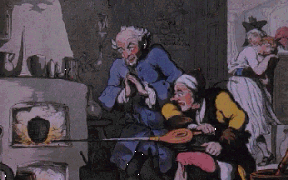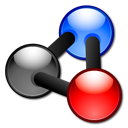Understanding of the alchemists is hampered by their predilection for making their writings incomprehensible ( instant knowledge was not to be available to the uninitiated ) and the popular view that their quest was simply to isolate the Philosophers’ Stone and to use it to transform base metals into gold.
There was in fact a genuine search for mental and spiritual advance.
Using a world-view totally unlike that recognised today, the alchemists’ ideas of ‘spirit’ and ‘matter’ were intermingled – the ability to use ‘spirit’ in their experiments was the difficult part.

To transform copper to gold: – copper could be heated with sulphur to reduce it to its ‘basic form’ (a black mass which is in fact copper sulphide) – its ‘metallic form’ being ousted by the treatment. The idea of introducing the ‘form of gold’ to this mass by manipulating and mixing suitable quantities of spirit stymied alchemists for over fifteen centuries.
Whilst this transmutation of metals was the mainstream concern of alchemy, there emerged in the sixteenth century a school that brought the techniques and philosophies of alchemy to bear on the preparation of medicines, two of the main figures involved being PARACELSUS and JOHANN VAN HELMONT

THE EIGHTEENTH CENTURY
COMBUSTION and PHLOGISTON
Noticing that burning a candle in an upturned container, the open end of which is submerged in water, causes the water to rise into the container, Philon of Byzantium inferred correctly that some of the air in the container had been used up in the combustion. However, he proposed that this is because this portion of the air had been converted into ‘fire particles’, which were smaller than ‘air particles’.
In 1700 the German physician Georg Ernst Stahl (1660-1734) invoked ‘phlogiston’ to explain what happens when things burn. He suggested that a burning substance was losing an undetectable elementary principle, analogous to the ‘sulfur’ of J’BIR IHBIN AYAM, which he re-named ‘phlogiston’. This could explain why a log (rich in phlogiston) could seem to be heavier than its ashes (deficient in phlogiston). The air that is required for burning served to transport the phlogiston away.
The English chemist JOSEPH PRIESTLY (1733-1804), although a supporter of the phlogiston theory, ironically contributed to its downfall. He heated mercury in air to form red mercuric oxide and then applied concentrated heat to the oxide and noticed that it decomposed again to form mercury whilst giving off a strange gas in which things burnt brightly and vigorously. He concluded that this gas must be ‘phlogiston poor’.
Priestly combined this result with the work of the Scottish physician Daniel Rutherford (1749-1819), who had found that keeping a mouse in an enclosed airtight space resulted in its death (by suffocation) and that nothing could be burnt in the enclosed atmosphere; he formed the idea that the trapped air was so rich in phlogiston that it could accept no more. Rutherford regarded this as ‘phlogisticated air’ and so Priestly called his own gas ‘dephlogisticated air’.
In 1774 Priestley visited the French chemist ANTOINE LAVOISIER (1743-1794).
Using chemical reactions, Lavoisier had combined a portion of normal air with other substances.
Lavoisier repeated Priestly’s experiments with careful measurements.
Reasoning that air is made up of a combination of two gases – one that will support combustion and life, another that will not; what was important about Lavoisier’s experiments was not the observation – others had reached a similar conclusion – but the interpretation.
Lavoisier called Priestley’s ‘dephlogisticated air’, ‘oxygene’, meaning ‘acidifying principle’, believing at the time that the active principle was present in all acids (it is not). Classifying oxygen as an element, he called the remaining portion of normal air ‘phlogisticated air’, ‘azote’, meaning ‘without life’.
Oxygen is the mirror image of phlogiston. In burning and rusting (the two processes being essentially the same) a substance picks up one of the gases from the air. Oxygen is consumed, there is no expulsion of ‘phlogiston’.
Lavoisier had been left with almost pure nitrogen, which makes up about four fifths of the air we breath. We now know azote as nitrogen. Rutherford’s ‘mephitic air’ was carbon dioxide.
CALORIC
Like phlogiston, caloric was a weightless fluid, rather like elemental fire; a quality that could be transmitted from one substance to another, so that the first warmed the second up.
It was believed that all substances contained caloric and that when a kettle was being heated over a fire, the fuel gave up its caloric to the flame, which passed it into the metal, which passed it on to the water. Similarly, two pieces of wood rubbed together would give heat because abrasion was releasing caloric trapped within.
What is being transmitted is heat energy. It was the crucial distinction between the physical and the chemical nature of substances that confused the Ancients and led to their minimal elemental schemes.


 ASTROLOGY
ASTROLOGY